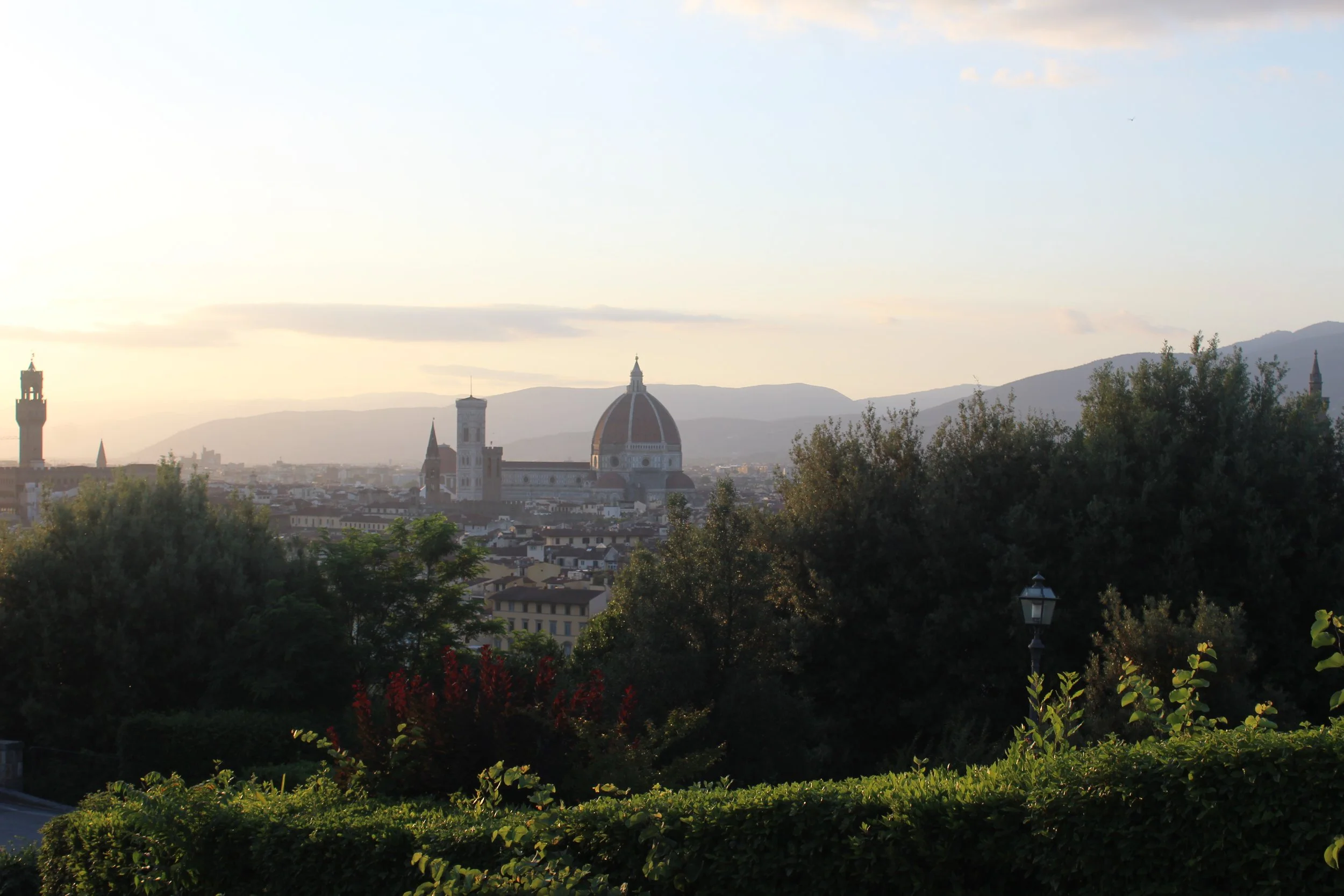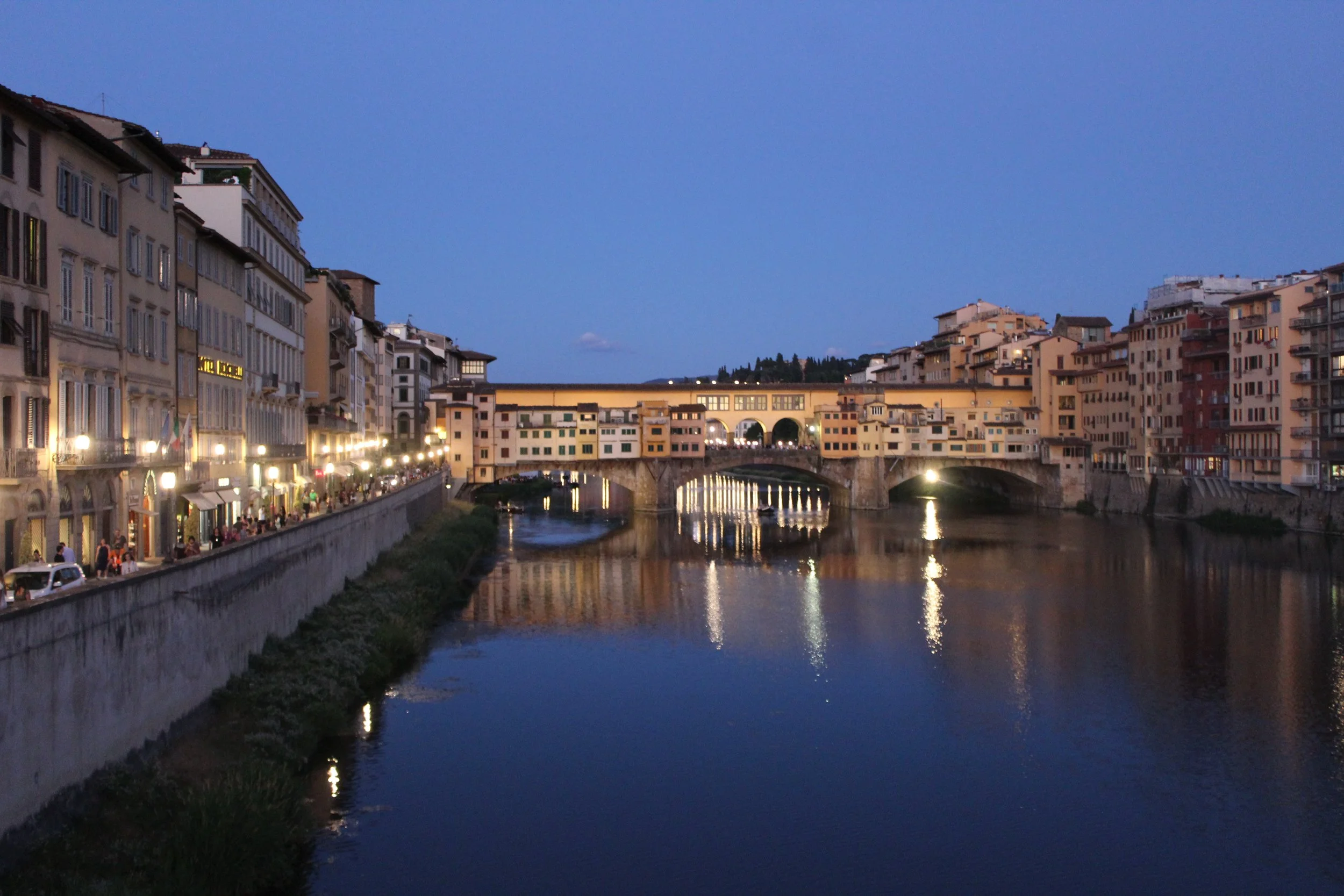WHERE TO STAY IN FLORENCE
📍 Florence, Italy
If you’ve got Florence, Italy on your must-visit list, you may be wondering which part of the city to stay in. Though small and very walkable, the city is broken out into distinct neighborhoods, rippling out around the Duomo, Florence’s top tourist attraction.
Now, when I’m looking for somewhere to stay, I often start by finding the city center. If the town is small enough, I go based on that. But in bigger cities, you have to get more specific, as sites are spread out and each neighborhood has its own feel. So then I start researching neighborhoods to find one that fits my travel style. My criteria are usually walkability, affordability, and local authenticity. For Florence, Santo Spirito fits the bill.
Aptly named, everything on the south side of the Arno River, is part of the Oltrarno area (literally meaning across the Arno). Much of this side is taken up by the Pitti Palace and surrounding Boboli Gardens, along with the Piazzale Michelangelo. But to the west is the lively Santo Spirito neighborhood, the city’s arts and culture hub.
Here’s my case for Santo Spirito, based on its historical charm, local bohemian vibe, and walkability to the rest of Florence.
📍 Ponte Vecchio
Historical Charm
Everyday over our month-long stay, we passed a church advertising its 800th anniversary celebration -- what more can you ask for?
The overall Oltrarno area is renowned for its rich history and preserved Renaissance architecture. The cobblestone streets, medieval buildings, and hidden squares evoke a sense of old-world charm. Picturesque piazzas dot the area, mixed in with parks where you can relax and soak in the ambiance.
Local Bohemian Vibe
Unlike the bustling Duomo and Santa Croce neighborhoods, Santo Spirito maintains a more authentic atmosphere, allowing you to immerse yourself in the city's cultural and historical heritage. Along the streets you’ll find local-owned apartments, churches, laundromats, restaurants, and more of the places needed on a day-to-day basis. The neighborhood isn’t overrun by tourists, but full of students, artists, and families. Though you can never truly experience a city as a visitor, the atmosphere paints a close picture.
This district is a haven for artisans and craftsmen. You'll find many workshops producing traditional Florentine crafts, including leather goods, ceramics, and jewelry. Strolling through the streets, you can pop into galleries and witness skilled artisans at work and even purchase one-of-a-kind souvenirs directly from the makers. This juxtaposition between historic and modern is one of the things I absolutely love about Europe, Florence included.
Proximity to Points of Interest
📍 The Duomo
The hub of the Santo Spirito neighborhood is the Piazza Santo Spirito, with a daily market and the Basilica di Santo Spirito. The Mercato Santo Spirito is bursting with fresh produce, local cheeses, and authentic Italian delicacies.
The area is also dotted with traditional trattorias and osterias serving mouthwatering Tuscan cuisine. You'll have the chance to dine where locals do, enjoying the authenticity and flavors of regional dishes.
Outside of the neighborhood’s own offerings, it's still within walking distance of Florence's major landmarks. On the south side of the river, you’ll find the Pitti Palace, Boboli Gardens, and Piazzale Michelangelo.
Across the river and the Ponte Vecchio, the Duomo, Uffizi Gallery, and Galleria dell’Accademia are easily accessible, allowing you to explore the iconic attractions without sacrificing the peace and authenticity that Oltrarno provides. Walkability is key here -- as you’ll likely wait forever for a taxi on strike or a bus that doesn’t come.
Our Thoughts
While there are many great places to stay in Florence, based on your itinerary and interests, I would highly recommend the Oltrarno area and Santo Spirito. It’s immediately a breath of relief from the crowded city center -- a must for those looking to get lost in local culture, not swallowed by it.













